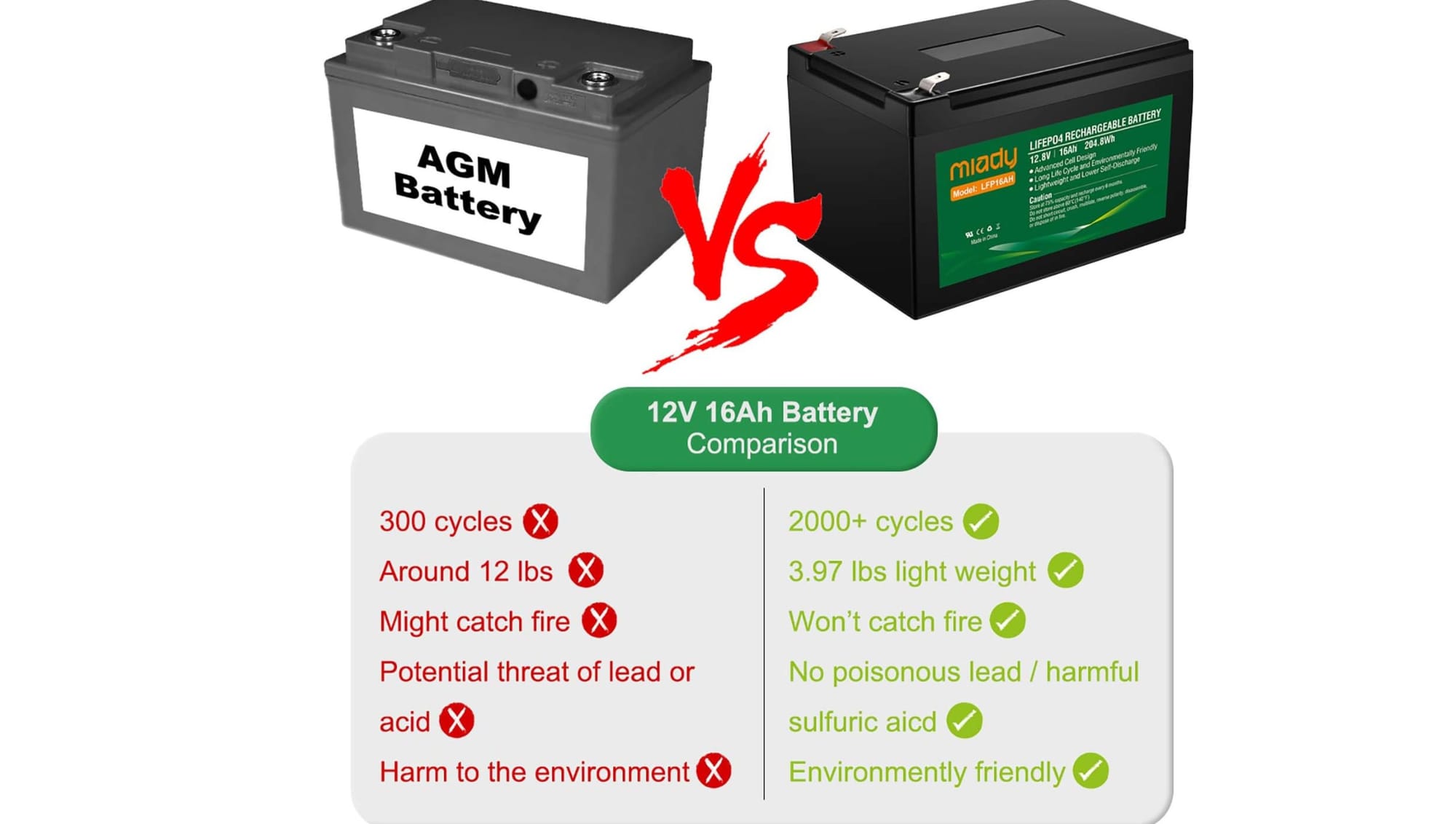Are LFP Batteries Safer Than Traditional Lithium-Ion Batteries?
Make the switch to LFP batteries and experience a safer, more secure energy solution for your daily needs.

Key Takeaways:
- LFP batteries offer enhanced safety features compared to traditional lithium-ion batteries.
- They exhibit better thermal stability and a lower risk of fire.
- LFP batteries are increasingly being adopted in various industries due to their safety and longevity.
Introduction to LFP Batteries
LFP batteries, or Lithium Iron Phosphate batteries, have been making waves in the battery industry. With the growing demand for safer and more reliable energy storage solutions, these batteries are becoming a popular choice. But what exactly sets them apart from traditional lithium-ion batteries?
Understanding Traditional Lithium-Ion Batteries
Traditional lithium-ion batteries have been the go-to for many applications, from smartphones to electric vehicles. They are known for their high energy density and efficiency. However, they come with their own set of challenges, particularly concerning safety.
The Composition of LFP Batteries
LFP batteries use lithium iron phosphate as the cathode material. This composition provides several advantages, including improved thermal stability and safety. Unlike traditional lithium-ion batteries, which use cobalt-based cathodes, LFP batteries are less prone to overheating and thermal runaway.
Thermal Stability: A Key Safety Feature
One of the standout features of LFP batteries is their thermal stability. Traditional lithium-ion batteries can become unstable at high temperatures, leading to potential fire hazards. LFP batteries, on the other hand, can withstand higher temperatures without compromising safety.
Lower Risk of Fire
The risk of fire is a significant concern with traditional lithium-ion batteries. Due to their chemical composition, they can catch fire if damaged or improperly handled. LFP batteries, with their stable chemistry, significantly reduce this risk, making them a safer option for various applications.
Longevity and Lifespan
LFP batteries are known for their long lifespan. They can endure more charge and discharge cycles compared to traditional lithium-ion batteries. This longevity not only makes them cost-effective in the long run but also enhances their safety profile, as they are less likely to fail prematurely.
Applications in Electric Vehicles
Electric vehicles (EVs) are one of the primary beneficiaries of LFP batteries. The safety and longevity of these batteries make them an ideal choice for EV manufacturers. Companies like Tesla have started incorporating LFP batteries in their vehicles to enhance safety and performance.
Use in Renewable Energy Storage
Renewable energy storage is another area where LFP batteries shine. Their ability to handle high temperatures and long cycles makes them perfect for storing solar and wind energy. This application not only promotes sustainability but also ensures a reliable energy supply.
Safety in Consumer Electronics
Consumer electronics, such as smartphones and laptops, also benefit from the safety features of LFP batteries. With the increasing demand for safer and more reliable devices, manufacturers are exploring the use of LFP batteries to meet consumer expectations.
Environmental Impact
LFP batteries have a lower environmental impact compared to traditional lithium-ion batteries. The absence of cobalt, a material often associated with unethical mining practices, makes LFP batteries a more sustainable choice. Additionally, their longer lifespan means fewer batteries end up in landfills.
Cost Considerations
While LFP batteries may have a higher upfront cost compared to traditional lithium-ion batteries, their long-term benefits outweigh the initial investment. The extended lifespan and enhanced safety features make them a cost-effective solution over time.
Case Study: Tesla's Adoption of LFP Batteries
Tesla's decision to use LFP batteries in some of its electric vehicles is a testament to their safety and reliability. By opting for LFP batteries, Tesla aims to reduce the risk of fire and improve the overall lifespan of its vehicles. This move has been well-received by consumers and industry experts alike.
Comparing Energy Density
Energy density is a critical factor when comparing batteries. Traditional lithium-ion batteries typically have a higher energy density than LFP batteries. However, the safety and longevity of LFP batteries often outweigh the slightly lower energy density, especially in applications where safety is paramount.
Charging Efficiency
LFP batteries offer efficient charging capabilities. They can be charged at a higher rate without compromising safety, making them suitable for applications that require quick charging. This efficiency is particularly beneficial for electric vehicles and renewable energy storage systems.
Maintenance and Safety Protocols
Maintaining LFP batteries is relatively straightforward. Their stable chemistry reduces the need for stringent safety protocols, making them easier to handle and maintain. This simplicity is a significant advantage for industries looking to adopt safer battery technologies.
Future Prospects of LFP Batteries
The future looks promising for LFP batteries. With ongoing research and development, we can expect further improvements in their performance and safety features. As industries continue to prioritize safety and sustainability, the adoption of LFP batteries is likely to increase.
Industry Adoption Trends
Various industries are recognizing the benefits of LFP batteries and are gradually shifting towards their use. From automotive to consumer electronics, the trend is clear: safety and longevity are becoming top priorities, and LFP batteries are leading the charge.
Regulatory Standards and Compliance
Regulatory bodies are also taking note of the safety advantages of LFP batteries. New standards and guidelines are being developed to encourage the use of safer battery technologies. This regulatory support is crucial for the widespread adoption of LFP batteries.
Consumer Awareness and Education
Educating consumers about the benefits of LFP batteries is essential. As more people become aware of the safety and longevity of these batteries, the demand for products incorporating LFP technology is likely to grow. This awareness can drive market trends and influence industry practices.
Challenges and Limitations
Despite their many advantages, LFP batteries are not without challenges. Their lower energy density compared to traditional lithium-ion batteries can be a limitation in certain applications. However, ongoing research aims to address these limitations and enhance the overall performance of LFP batteries.
Innovations and Technological Advancements
Technological advancements are continuously improving the performance of LFP batteries. Innovations in materials and manufacturing processes are enhancing their energy density and efficiency. These advancements are crucial for expanding the applications of LFP batteries.
Real-World Examples
Real-world examples of LFP battery adoption highlight their benefits. From electric buses in China to solar energy storage systems in Europe, LFP batteries are proving their worth in various applications. These examples demonstrate the practical advantages of LFP technology.
Expert Opinions
Experts in the battery industry often emphasize the safety and reliability of LFP batteries. Their insights and experiences provide valuable perspectives on the benefits and potential of LFP technology. Listening to these experts can help consumers and industries make informed decisions.
Comparing Costs Over Time
When comparing the costs of LFP batteries and traditional lithium-ion batteries, it's essential to consider the long-term perspective. While LFP batteries may have a higher initial cost, their extended lifespan and reduced maintenance needs make them more cost-effective over time.
Environmental Benefits
The environmental benefits of LFP batteries extend beyond their composition. Their longer lifespan means fewer batteries need to be produced and disposed of, reducing the overall environmental impact. This sustainability aspect is increasingly important in today's eco-conscious world.
Consumer Preferences
Consumer preferences are shifting towards safer and more sustainable products. As awareness of LFP batteries grows, consumers are likely to favor products that incorporate this technology. This shift in preferences can drive market trends and influence industry practices.
Conclusion
LFP batteries offer a safer and more reliable alternative to traditional lithium-ion batteries. Their enhanced thermal stability, lower risk of fire, and longer lifespan make them an attractive choice for various applications. As industries and consumers prioritize safety and sustainability, the adoption of LFP batteries is set to rise.
Summary
LFP batteries are emerging as a safer and more reliable alternative to traditional lithium-ion batteries. Their improved thermal stability, reduced risk of fire, and longer lifespan make them suitable for a wide range of applications, from electric vehicles to renewable energy storage. As industries and consumers become more aware of the benefits of LFP batteries, their adoption is likely to increase, driving innovation and sustainability in the battery industry.
If you believe LFP batteries offer a safer and more reliable alternative to traditional lithium-ion batteries after reading this blog, click below to explore the LFP batteries we've selected for you. They're perfect for a wide range of daily applications.

